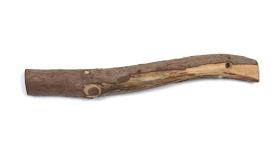That someone, even one organization or one person would be inspired by this and make this a reality in his community. Something to help, to make a difference, and to be blown away by how much we have been wasting our resources when in fact, the tiniest and "zero-value" things could be the ones to uplift one family to possibly an entire community.
I just came up with this idea of story-telling on valuing the environment a few months ago. I am often invited to speak on ecotourism and the environment and I often challenge myself to come up with new ideas or even just story angles in dealing with sustainable utilization (aka - exploitation) of the environment.
Share this or even own this, I don't care as long as it could help someone, or probably even our country.
Intro: In events where I am invited to talk on ecotourism, I usually tell of the value of the natural resources like trees and how, for many decades, we have often looked at their values on very linear and single-use basis. Loggers would see the wood, charcoal makers would see the residual value of logged out area, slash-and-burn farmers see the forest as a place to burn so they can plant vegetables or rice. Money is one-time and a tree or a forest dies out in the process.
That, in ecotourism, we say that you don't have to kill the tree to continue providing benefits to the people. The audience can't help but agree. They usually have no choice but to nod their heads to an obvious thing.
And that would set them up for a perplexing question I will ask.
I project a photo of a branch or a large stick as shown below. And I ask out loud, "I want to sell this thing, how much are you willing to pay for this?"

photosource: www.thpecialistsltd.com
It never fails, their eyes clearly indicate that they cannot understand what I am driving at. They look at me, at the projected photo, and to each other. All at a lost and confused.
Then I would repeat the question, "How about Php10?..... Php5?..... Php1?...... 50 centavos?..."
No takers. Crazy deal.
Its very understandable, nobody's going to spend for something that has no value.
Then, I flash this next photo. And everybody immediately understands. And 90% of the people smile.
photo source: www.instructables.com
It is obvious that the photo shows some sort of a paper weight.
And when I ask the same question on 'how much would the people be willing to pay for this,' the numbers shouted are immediate. Five pesos! Ten pesos! Twenty pesos!
They would think that it was the end of my entertainment. But no, I still have one slide left. I show them this:
You see, nobody wanted to pay for a tree branch that had "zero" value. Then we realized that just by cutting a waste product, it gained a decent price many are willing to pay for.
Then, we just put in some art, a rubber stamp-kind-of-art even, then add a compelling tag or statement..... how much are you willing to pay for this?
There are so many trees destroyed by past typhoons. So much "waste" generated. All it takes is one person to bring in a circular saw (less than Php30,000 investment), gather the tree branches scattered everywhere, and give the people one livelihood opportunity. Then perhaps this could make a huge difference for one person, one family, one community. And make a darn awesome statement of recovery!
What about the living trees in case all the rubbish woods are collected? They continue to be the giving trees that will provide the branches (aka - materials), and we don't have to kill them.
And what do we do to get more materials? Simple - we plant more trees.


No comments:
Post a Comment